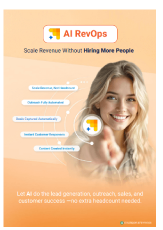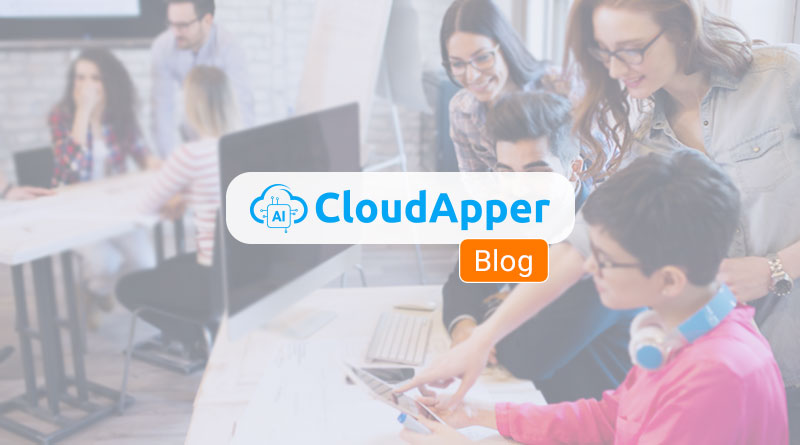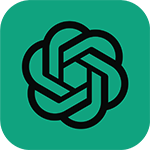AI-powered B2B lead generation revolutionizes Revenue Operations by automating processes, improving lead quality, and enhancing team alignment. This approach addresses traditional challenges, boosts efficiency, and drives growth for SaaS teams. Discover how AI transforms RevOps and why it's essential for mid-market B2B success in 2025.
Table of Contents
Did you know that 40% of sales reps blame poor lead quality for their biggest headaches? That’s the harsh reality in today’s B2B world, but AI-powered B2B lead generation for Revenue Operations changes everything. It boosts efficiency and drives real growth for SaaS teams. RevOps leaders often juggle tight resources while chasing revenue goals. Traditional methods drag them down with manual work and scattered data. However, AI steps in to automate and smarten up the process. For example, tools like CloudApper AI Scouting Agent scan data sources overnight and deliver high-fit leads. This shift not only saves time but also aligns teams for better results. Therefore, businesses that adopt these strategies see pipelines fill faster and costs drop. In this article, we dive into how AI transforms RevOps, tackles common challenges, and offers practical steps for success. You will discover why mid-market B2B prospects benefit most and how trends in 2025 make AI essential.
For more information on CloudApper AI RevOps visit our page here.
What Are the Top Challenges in Traditional B2B Lead Generation?
RevOps teams face tough obstacles with old-school lead generation. They rely on manual tasks like sifting through LinkedIn or buying email lists. These approaches create data silos that split information across sales, marketing, and support groups. As a result, collaboration suffers, and opportunities slip away. For instance, a team might chase a lead that doesn’t match their ideal customer profile, wasting hours on dead ends. Moreover, poor lead quality leads to low conversion rates. A HubSpot study shows that 40% of reps struggle with this issue, causing pipeline jams and revenue dips. In the SaaS sector, mid-market companies with 100 to 1,000 employees need precise targeting. However, without smart tools, RevOps can’t keep up with buyer behaviors or economic shifts. Therefore, inefficiency builds up, and growth stalls. AI-powered B2B lead generation for Revenue Operations fixes these problems by automating research and scoring leads accurately. It breaks down silos and focuses efforts on prospects that convert. For example, AI analyzes patterns from past deals to predict winners. This way, teams spend less time hunting and more time closing.
How Does AI Improve Lead Scoring in Revenue Operations?
AI revolutionizes lead scoring with predictive models that adapt on the fly. These models use machine learning to evaluate prospects based on data like company size, industry, and intent signals. Unlike rigid systems, AI updates scores in real time. For example, if a prospect posts about a new funding round, the system flags it as high-potential. Therefore, RevOps teams prioritize leads that fit their ICP perfectly. In the B2B SaaS space, this means targeting mid-market firms with revenues from $10M to $100M. CloudApper AI Scouting Agent excels here by enriching profiles with insights from sources like Crunchbase and social media. It verifies contacts and ensures data accuracy. As a result, conversion rates climb, and costs fall by up to 50%, according to Forrester benchmarks. Moreover, AI handles repetitive tasks, freeing teams for strategic work. However, the real power lies in its adaptability. As market trends shift, like the rise of remote work, AI adjusts ICP criteria automatically. This keeps lead generation aligned with revenue goals. For RevOps leaders, integrating such tools means scalable systems without adding staff.
Best Practices for Implementing AI in B2B Lead Generation
Start by auditing your current RevOps setup to spot inefficiencies. Look for duplicated efforts or scattered data. Tools like CloudApper AI Scouting Agent provide a unified view, helping teams collaborate better. Next, define your ICP with clear details, such as targeting IT decision-makers in mid-market tech firms. This ensures precise focus and cuts waste. Then, integrate AI solutions that fit your workflow. For instance, the Scouting Agent scans public records and LinkedIn automatically. It enriches leads while you sleep, saving hours. After that, build predictive models to score leads on factors like engagement and trends. These models often hit 80% accuracy in predicting conversions. Finally, monitor metrics like lead quality and cost per lead. Adjust as needed for ongoing improvement. However, don’t overlook data privacy; comply with rules like GDPR. By following these steps, RevOps can slash costs and boost qualified leads. A SaaS company using this approach saw a 35% rise in leads within months. Therefore, implementation drives real, measurable growth.
What Market Trends Shape AI-Powered Lead Generation in 2025?
AI adoption surges in sales and marketing, with Gartner predicting a 30% growth this year. Predictive analytics and real-time processing lead the charge. In RevOps, this means hyper-personalized outreach based on buyer signals. For example, AI spots intent from job postings or website visits. Therefore, teams deliver tailored messages that resonate. Moreover, economic uncertainties push for lean operations, making AI essential. McKinsey forecasts AI adding $13 trillion to global GDP by 2030, with sales ops gaining big. In SaaS, trends like digital transformation reshape buying journeys. However, success requires secure tools that build trust. CloudApper solutions focus on compliant data handling. As we hit 2025, events like Dreamforce highlight AI’s role in efficiency. RevOps leaders who adapt thrive amid competition. For instance, intent-based marketing uses AI to predict needs, speeding up deals. Therefore, staying ahead with AI-powered B2B lead generation for Revenue Operations ensures resilience.
Real-World Examples of AI Success in RevOps
One SaaS firm in project management tools struggled with stagnant pipelines. They integrated CloudApper AI Scouting Agent to automate sourcing. The tool targeted mid-market prospects effectively, adjusting ICP in real-time. As a result, they cut costs by 40% and boosted pipeline velocity by 25%. Without hiring more staff, revenue grew sustainably. Another example involves a tech company facing data silos. AI unified their info, improving team alignment. Conversion rates jumped as leads matched ICP better. These stories show how AI-powered B2B lead generation for Revenue Operations delivers practical value. For RevOps, it means focusing on high-intent buyers and reducing manual work. However, the key is starting small and scaling. Tools like the Scouting Agent make it easy, with overnight enrichment. Therefore, businesses gain an edge in competitive markets.
Why Choose AI for Scalable Revenue Operations?
AI builds resilient systems that adapt to changes. It addresses silos and inefficiency, optimizing workflows for growth. RevOps teams that invest in tools like CloudApper see long-term success. For mid-market B2B, precise targeting drives results. As trends evolve, AI keeps you ahead. Therefore, embrace AI-powered B2B lead generation for Revenue Operations to transform your efficiency and revenue.
What is CloudApper AI Platform?
CloudApper AI is an advanced platform that enables organizations to integrate AI into their existing enterprise systems effortlessly, without the need for technical expertise, costly development, or upgrading the underlying infrastructure. By transforming legacy systems into AI-capable solutions, CloudApper allows companies to harness the power of Generative AI quickly and efficiently. This approach has been successfully implemented with leading systems like UKG, Workday, Oracle, Paradox, Amazon AWS Bedrock and can be applied across various industries, helping businesses enhance productivity, automate processes, and gain deeper insights without the usual complexities. With CloudApper AI, you can start experiencing the transformative benefits of AI today. Learn More
AI RevOps Agent
Scale Revenue Without Hiring More People
Download Brochure


Amplifier Agent
Keeps Your Brand Visible With Articles & Social Media Content That Connects.
Learn More
Outreach Agent
Launches Email & SMS Campaigns That Reach Out on Time and Actually Convert.
Learn More


- Works with
Similar Posts

Integrate Automated Email Campaign Sequencing for Smarter Sales Outreach Strategies

The AI Agent Blueprint: Expand Pipeline Coverage Without Hiring More…

















